How do you make a beardie’s house as comfy as possible? The answer is straightforward, i.e., provide him the substrate.
In his cage, make use of one of the best substrates and bedding for bearded dragons available. To distinguish one type of substrate from another, we conducted an extensive study.
What Is The Best Bearded Dragon Bedding In The Market Today?
| Title | Price | Buy |
|---|---|---|
| Reptile Sciences Terrarium Sand for Aquarium, 10-Pound, Natural White | $28.99 | Buy On Amazon |
| Zilla Alfalfa Meal Reptile Bedding (15 lbs.) | $11.45 | Buy On Amazon |
| Zoo Med Forest Floor Bedding, 24 Quarts | $26.44 | Buy On Amazon |
| Zoo Med ReptiFresh Odor Eliminating Substrate, Blacks & Grays, 8 lb | $10.99 | Buy On Amazon |
| Zoo Med Excavator Clay Burrowing Substrate, 10 Pounds | $12.10 | Buy On Amazon |
| Zoo Med 26084 Eco Earth Loose Bag, 24 Quart | 34.00 | Buy On Amazon |
| Zilla Ground English Walnut Shells Desert Blend | $19.99 | Buy On Amazon |
Because bearded dragons are desert reptiles, they require a habitat that is both dry and warm. They are reliant on their caretaker to clean up after them. However, they are also susceptible to a health issue known as impaction. As a result, their bedding must be clean, dry, and simple to keep, and not harmful if they accidentally consume it.
When it comes to the finest substrates for beardies, there is a lot of disagreement. Some experts propose loose bedding that the lizard can burrow into, while others recommend flat surfaces such as reptile mats, which are more suitable for the lizard’s needs. Similarly, some said the best bedding is the DIY substrate bearded dragons. Of course, each has its own set of advantages and disadvantages.
As you search for substrate today, we hope that our reviews on the best substrate for baby bearded dragons or adults will assist you in making the best decision for your pet.
The best substrate for bearded dragons
Here are the best-bearded dragon’s substrate choices along with bearded dragon substrate pros and cons:
Loose bedding
Adults should only use this sort of substrate. Before moving on, let us consider the concept of impaction.
What exactly is impaction?
If your bearded dragon consumes an excessive amount of loose substrate, he may develop a clog in his intestines as a result. Dragons perish as a result of this issue.
It is not only the bedding that has the potential to induce impaction. In addition, if the beardie is dehydrated, does not have access to a high enough temperature for basking, or has a high concentration of parasites, it may impact feeding.
What is the natural surface like in the area where bearded dragons are believed to have originated?
Herpetologists in Australia have discovered that dragons prefer to reside in areas where the sand is nearly wholly absent. The fine, soft sand is composed primarily of quartz and iron oxide, with trace quantities of silt, clay, and gravel thrown in for good measure.
In the case of loose bedding, how can you avoid impaction?
Provide ample drinking water for your dragon and place his food in a dish rather than directly on top of the substrate to avoid making him ill. After that, select bedding that is reminiscent of his native surroundings in the wild. Finally, make sure to supplement his diet with adequate calcium so as not to feel compelled to consume the substrate.
1. Zoo Med Eco Earth Loose Coconut Fiber
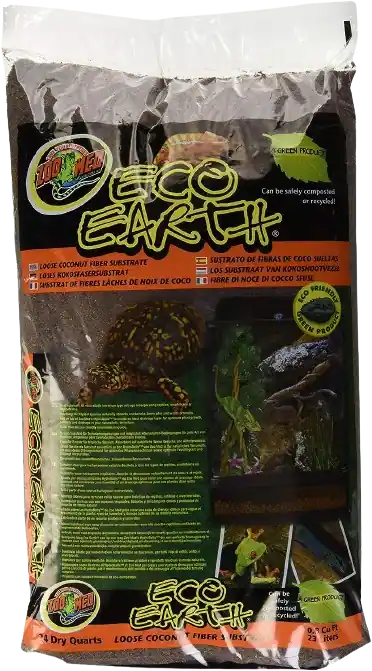
In addition to providing hydration and a safe environment for your pet, this substrate can decompose waste. This product is composed entirely of natural coconut fiber that has been properly processed without any chemicals. In terms of reptiles, it is perfect for replicating tropical habitats in the lab.
2. Reptile Sciences Terrarium Sand for Aquarium

Calcium carbonate sand is available for purchase at Reptile Sciences. To be clear, this is something that some pet owners want to avoid, like the plague. They are afraid of it because, even though it is edible, an excessive amount of calcium carbonate might neutralize the dragon’s stomach acid. Because beardies are curious creatures, they will probably consume them. Even though it contains vital minerals, the dragons should already eat those elements as part of their usual diet.
On the other hand, this sort of substrate naturally reduces the smell and has a natural appearance in a terrarium setting. It is also available in a variety of colors.
If you pick this bedding, please ensure that it has access to enough water and heat for basking and that food is placed in a dish rather than directly on the surface. Use this method only with adults, never with children or hatchlings.
3. Zoo Med ReptiFresh Odor-Eliminating Substrate
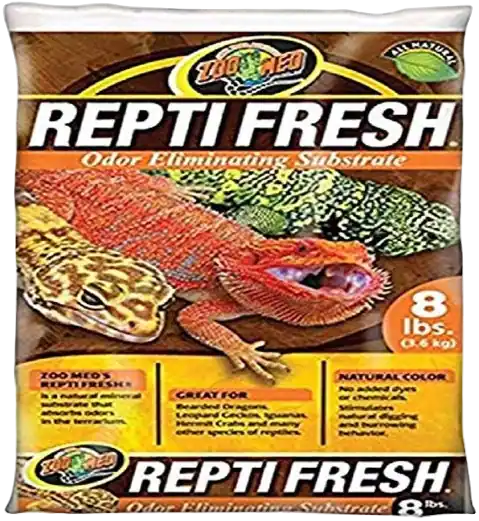
When appropriately used, Zoo Med’s odor-eliminating substrate can last for up to a year before it has to be replaced. You may combine it with Zoo Med’s Excavator clay or ReptiSand to create a unique look. It clumps together, allowing you to sweep up messes as if you were cleaning kitty litter with a scoop. Please remember that the manufacturer suggests feeding calcium to your dragon to prevent him from feeling the urge to devour his bedding.
4. Zoo Med Excavator Clay Burrowing Substrate
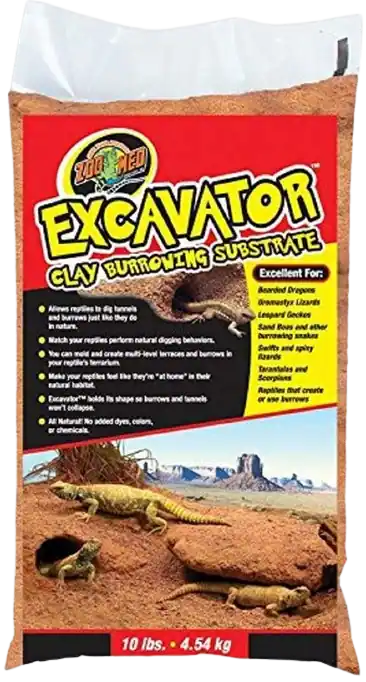
The Excavator Clay has a moldable consistency. The addition of water allows you to create terrain for your bearded dragon to play on and enjoy. It does not include any additional colors or chemicals. When it dries, it does not become hard or harsh, despite retaining its shape. Owners recommend having a supply of dried clay on hand to replace odorous areas. Another word of caution: because this substrate maintains heat, it should never be used with an under-tank heater.
5. Zoo Med Forest Floor Bedding
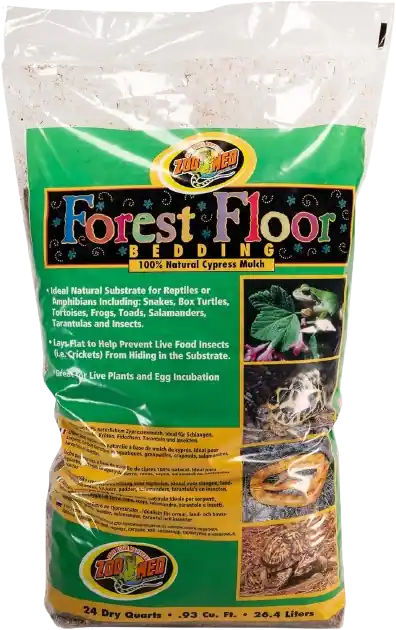
This loose substrate is perfect for simulating a jungle habitat for your pet, and it is inexpensive. It has excellent moisture retention and absorbency properties. A soft texture does not harm reptiles. There are no hazardous chemicals used in the production of this product because it is created from natural cypress. This is considered the best bearded dragon-digging substrate.
6. Zilla Alfalfa Meal
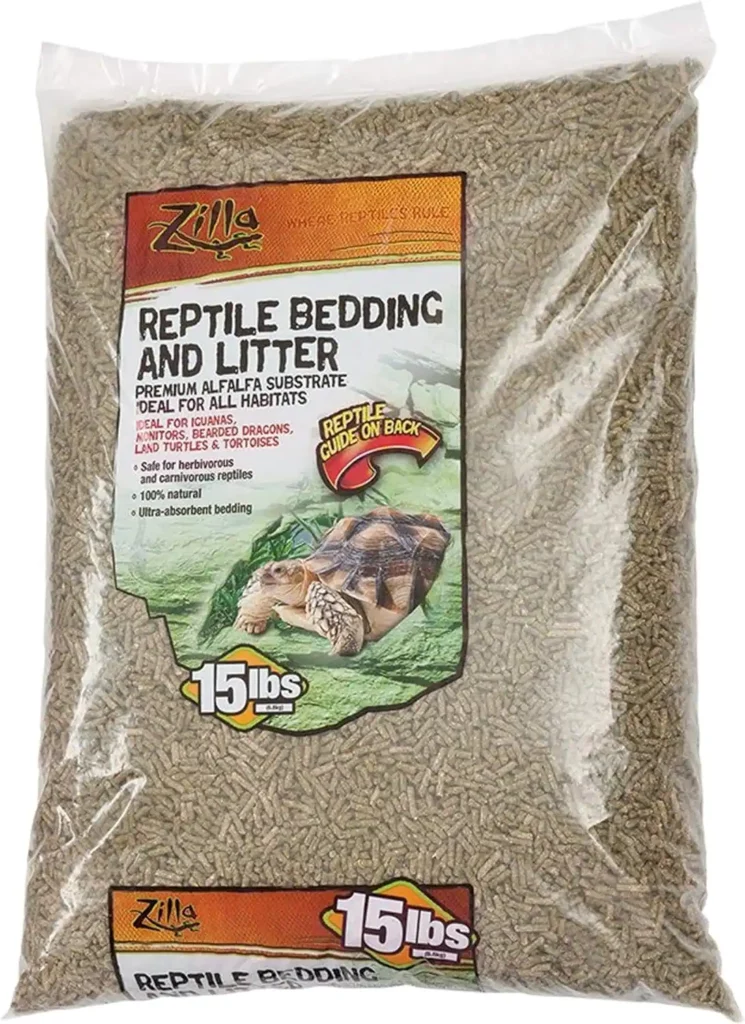
Some pet owners choose to use alfalfa meal as bedding in their terrariums, which they can get at a local feed store. It has high absorption and digestibility. Also included is a bacteriostatic agent to help keep dangerous germs under control while you’re cooking. Because it is biodegradable, you may compost this substrate instead of flushing it down the toilet or tossing it away in the trash.
7. Zilla Ground English Walnut Shells in Desert Blend
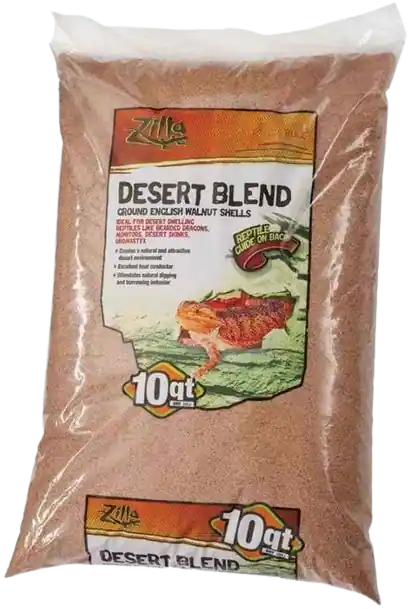
Zilla sells pulverized English Walnut shells that are small, rounded, and consistent in size and shape. Neither the smell nor the amount of dust produced by this bedding is powerful. The shells, in contrast to sand, do not adhere to the reptile’s body. If your bearded dragon enjoys digging, he may find this sort of bedding to be appealing. However, this sort of substrate should never be used for hatchlings or juveniles.
Reptile terrarium liners and mats
Let’s have a clear look at the pros and cons of utilizing a reptile mat. We’ll start with the professionals. First and foremost, it is simple to clean and replace. Second, it doesn’t produce dust and isn’t edible in any way. Third, many terrarium liners are not only safe for adults but also for youngsters. Fourth, getting one is a smart idea, even if you plan on putting loose bedding on top of it. In fact, by burrowing into his bedding, your beardie will never have to cope with the cold glass of a window on his tummy again.
Following that, there are a handful of disadvantages. There are multiple reasons why you should clip your dragon’s nails to prevent them from becoming entangled in the surface. And the other is that you’ll probably want to buy two liners at the start of your journey, for the simple reason that you’ll need a clean, dry one to put in the cage while the filthy one dries off.
| Title | Price | Buy |
|---|---|---|
| Zilla Reptile Terrarium Liners Brown 10/20X Gallon | $7.49 | Buy On Amazon |
| ZooMed Eco Cage Carpet for 55 Gallon tanks, 13”x48” | $8.45 | Buy On Amazon |
| Exo Terra Sand Mat, 40-Gallon | $38.89 | Buy On Amazon |
| Repti Cage Carpet for Reptile Cages | $17.99 | Buy On Amazon |
| Hamiledyi Reptile Carpet, Natural Coconut Fiber Carpet | $19.99 | Buy On Amazon |
1. Zilla Reptile Terrarium Bedding Substrate Liner
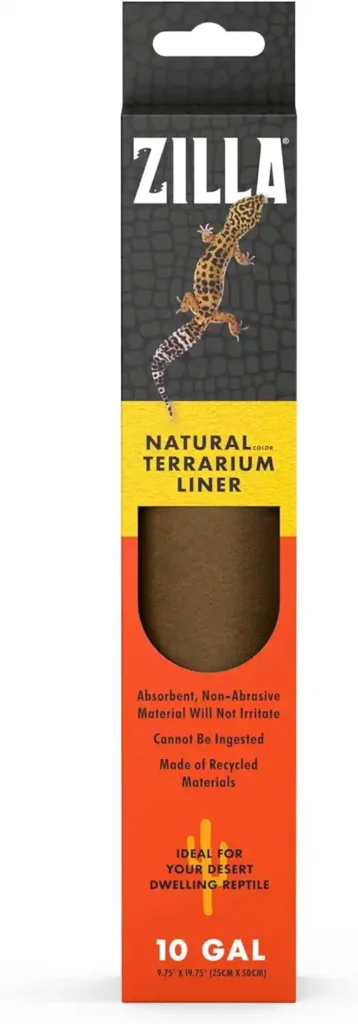
Zilla’s terrarium liner is available in several colors and may be customized to fit your needs. It is suitable for juvenile and adult bearded dragons since it cannot be consumed like walnut shells or sand may. Aside from that, it’s effortless to clean, it’s made of recycled materials, and it can be reused several times.
Purchase two aquarium liners so that you may set one in the tank while you wash and dry the other. This will give you the most remarkable results. You may remove dried feces and leftover food by shaking it off and then rinse the liner with cold water to clean it.
But what about the smell? According to Zilla, the product has been treated with biodegradable enzymes to minimize odors. Additionally, it is nonabrasive and absorbing. There is only one crucial aspect to take into account. To prevent your dragon’s nails from becoming entangled in the substrate, its owners highly advise that you cut them.
2. ZooMed Eco Cage Carpet for 55 Gallon Tanks
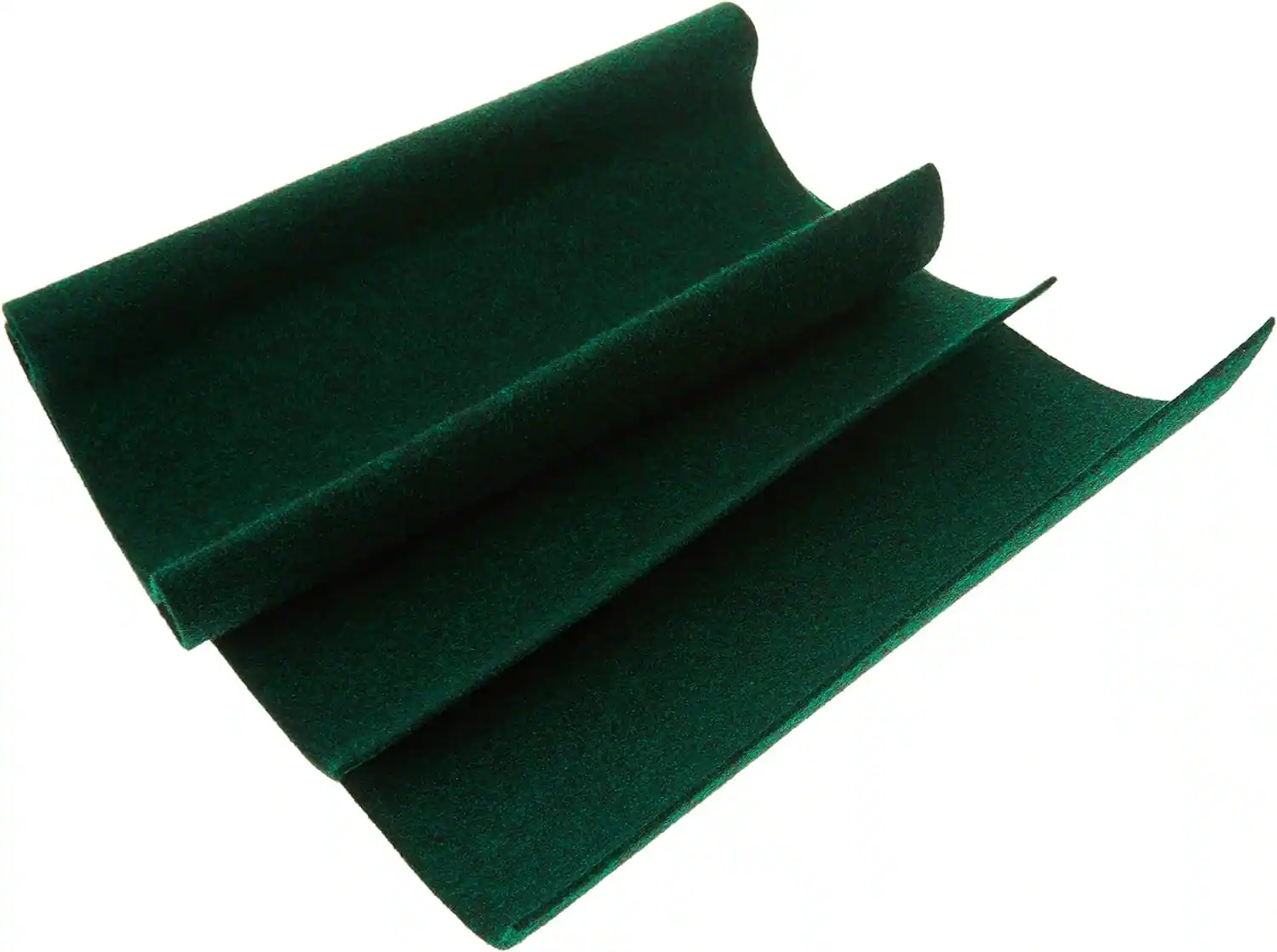
ZooMed also manufactures a sort of washable reptile carpet that can be used in aquariums. It is absorbent and will not irritate the scales of your bearded dragon. Please plan on cutting the nails of your dragon to prevent them from snagging on the surface once again. On the other hand, post-consumer recycled plastic is not something that your bearded dragon should consume.
3. Repti Cage Carpet for Reptile Cages

This reptile carpet is highly safe for you and your reptile companion. No chemicals are present, and the texture is not sharp, which means it will not irritate or damage the skin or eyes of reptiles. It comes in a pack of two pieces, and it may be used again when it has been cleaned.
4. Exo Terra Sand Mat, 40-Gallon

The Exo Terra Sand Mat has the appearance of a desert floor. To clean it, you may trim it to match your terrarium’s dimensions and then rinse it well. Although the maker advertises it as safe and hygienic, some reviews have expressed a different viewpoint on the subject. Several reviewers have expressed concern that it is dusty immediately out of the box and does not remove odor as effectively as other liners.
5. Hamiledyi Reptile Carpet, Natural Coconut Fiber Carpet for Pet Terrarium Liner
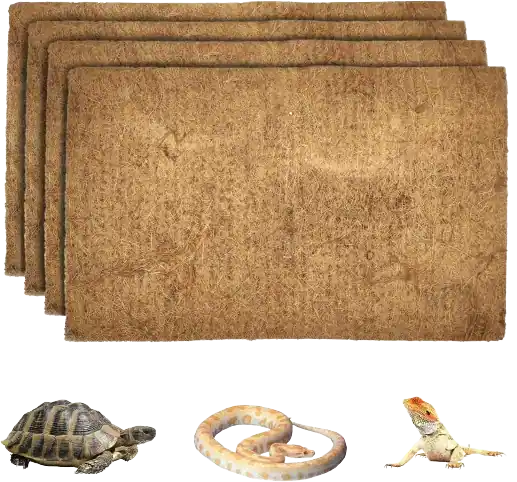
In your bearded friend’s home, you may also try a coconut fiber carpet that is nonabrasive. It works similarly to recycled plastic mats in that it lowers odor by using a biodegradable enzyme. Furthermore, it is machine washable in cold water. It can be trimmed to fit if necessary.
Which type of bedding is the most comfortable?
It’s possible that you still have reservations after viewing our top selections. We appreciate you doing so since it demonstrates your concern for your bearded dragon.
If you’ll be hosting a hatchling or a juvenile, the decision is straightforward. Paper towels, newspaper, or butcher paper are all excellent options for a safe and inexpensive substrate. Alternatively, you may use one of the reptile mats that we evaluated at the beginning of this post instead.
After that, you can use loose bedding to accommodate an adult dragon. If you don’t mind a little dust, fine quartz sand could be the ideal choice for you. It is designed to look and feel like their native environment.
However, please safeguard your beardie by ensuring that he gets enough calcium in his food and drinks enough water. Ascertain that he has access to a warm area where he may sun himself. Also, by placing his food in a dish, you may keep it off the table.
If you’re still having trouble deciding, ask your veterinarian for advice. If they have prior expertise treating impaction in reptiles, this is a good sign.
How can you determine if your bearded dragon is suffering from impaction in its digestive system?
There are three techniques to determine whether or not your beardie is suffering from digestive problems. One is that they will not defecate for a few days after the infection has been treated. The majority of dragons have bowel motions on a daily or every other day basis. Second, he’ll be sluggish and uninterested. In the third instance, you could see a bulge on his back or tummy. Consult your vet-doc if you are in any doubt.
What amount of loose bedding will you require?
When determining the amount of bedding you’ll require, make sure you pile it at least one inch deep. Two inches is preferable. Moreover, have some extra to replace any items that are removed throughout the cleaning process.
One rule of thumb to follow when setting up a bearded dragon tank is to purchase one pound of substrate for every gallon of tank space available. It takes around 30 pounds of bedding to care for a 30-gallon tank properly.
Know About: Yellow Fungus In Bearded Dragons: Everything You Need To Know
Bearded dragon tile substrate
Among the greatest all-around floor surfaces for bearded dragons are tiles, particularly slate tiles. Easy to clean and disinfect, easily chewed off and soaked in water, and can have an aesthetically pleasing appearance. Furthermore, tiles can also be used as a foundation for other substrates and beds, such as artificial turf. As a result, there is always a floor surface available, or it can be utilized as a floor surface in its own right.
It is essential to apply silicone to fill the spaces between your bearded dragon housing tiles when assembling them. This will prevent water from seeping beneath the surface and insects from seeking refuge in cracks and crevices.
Tiles are also ideal for flooring in quarantine enclosures and other areas where sickness has struck, and sanitation must be at its highest level. It is possible to clean tiles so well, on the other hand, that they can aid in keeping people healthy.
The disadvantage of using tiles for bearded dragons is that their claws slip on the surface of the tiles. There is little to no grip on the surface. Nevertheless, this is no longer a concern when combined with other substrates, such as bedding substrate liners.
Sand for bearded dragon
There are many different kinds of sand, including beach sand, river sand, desert sand, play sand, and calcium sand. Sand absorbs spills fast and gives possibilities for digging activities, which contribute to the richness of the surrounding environment.
Bearded dragons are frequently housed in sand from children’s play areas, which is an excellent substrate for them. If you have a lovely bearded dragon, you may want to use sand from a children’s play area. Desert sand is wonderful, and while wet, it may be shaped into a shape that will become solid after it has dried. It will also hold its shape effectively when dug into the ground if it is somewhat moist.
Pros: Play sand is distinguished by its rounder grains and lesser abrasion texture compared to other sands. It will retain part of the shape dug into it somewhat damp, but it will not shape up in the same manner as desert sand will. Builders’ sands are abrasive and sharp, and it is preferable to avoid using them.
Sand for bearded dragons, like all loose substrates, is not ideal for use as a floor covering in a tiny enclosure, but it is an excellent complement to housing in a dig box where it can be contained.
Cons: Eating sand can impact whether intentionally or inadvertently (when it becomes attached to food). However, even though bearded dragons live in sandy conditions in their native environment, they are not restricted to a few square feet of area and take advantage of several possibilities to get away from it.
Make sure your bearded dragon does not have to feed on the sand if you want to keep it. It is preferable not to use sand since it will generate fine dust particles, which might cause respiratory problems in certain people.
Is it appropriate to use calcium sand in the care of a bearded dragon?
Bearded dragons should not be exposed to calcium sand. Bearded dragons should not be exposed to calcium sand. As many experienced keepers have pointed out, calcium sand is safe because As we continue to read about the advantages of calcium sand, we discover that it includes strontium, potassium, and magnesium. Please do not consider this a nutritional supplement; it is more accurately described as a substrate rather than a food.
Calcium sand is not appropriate for ingestion and does not help in the digestion of foods containing calcium. Suppose calcium sand is utilized as a dietary supplement source. In that case, it will be impossible to determine how much is consumed and when more should be added to the diet without reaching dangerous amounts of calcium. Because a substrate is not eligible for inclusion in a food supplementation program, it is deemed irrelevant.
In contrast to calcium carbonate, designed as a dietary supplement, calcium carbonate is not approved for use on the skin. It is drying to the skin and has been linked to various problems, including skin discoloration, eye irritation, and impaction, amongst other things.
Calcium carbonate is utilized as a food ingredient and dietary calcium source. Still, it is also employed as a whitening agent and an antacid (made to neutralize acid required for digestion in normal circumstances). Normal circumstances should not necessitate the neutralization of stomach acid.
Is it Possible to Use Living Grass?
In the bearded dragon’s enclosure, it is possible to utilize trays of grass. Clover and dandelions are simple to incorporate into the mix. With the presence of grass, dandelions, and clover, it will almost certainly become a snack tray.
This falls somewhere in the center of the spectrum between substrate and accessory. Because it will cover a portion of the floor, I have included it in this section.
Chemicals and fertilizers should not be present in the sand used in the trays. For your bearded dragon to thrive, it goes without saying that the soil must be free of mites, fleas, and any other pests that might harm your pet. Slaters (also known as pill bugs or rolly pollies) are not harmful to humans or animals, and your bearded dragon will happily consume them.
Maintaining several trays in operation at any moment will enable them to be rotated out when they begin to show signs of fatigue. It is critical to rotate and rest the trays regularly to prevent the accumulation of germs.
Conclusion
We hope that this information has assisted you in searching for the best-bearded dragon bedding and substrate for your companion. We anticipate that you and your new companion will enjoy many happy years together.
Read More: Baby Bearded Dragon For Sale: Buying Guide For 2024
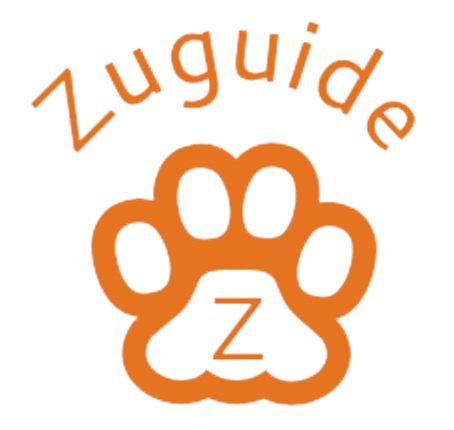
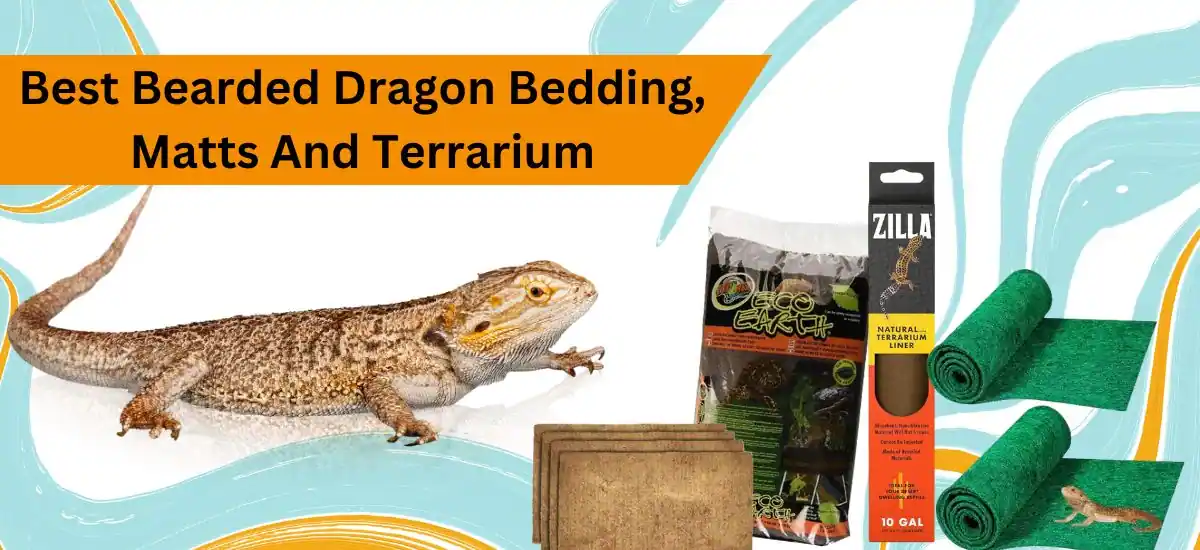
Leave a Reply
You must be logged in to post a comment.